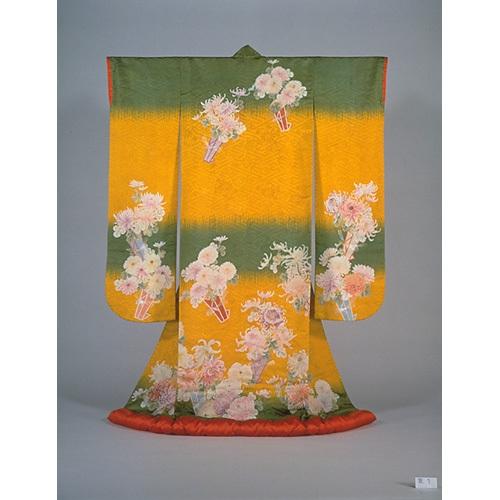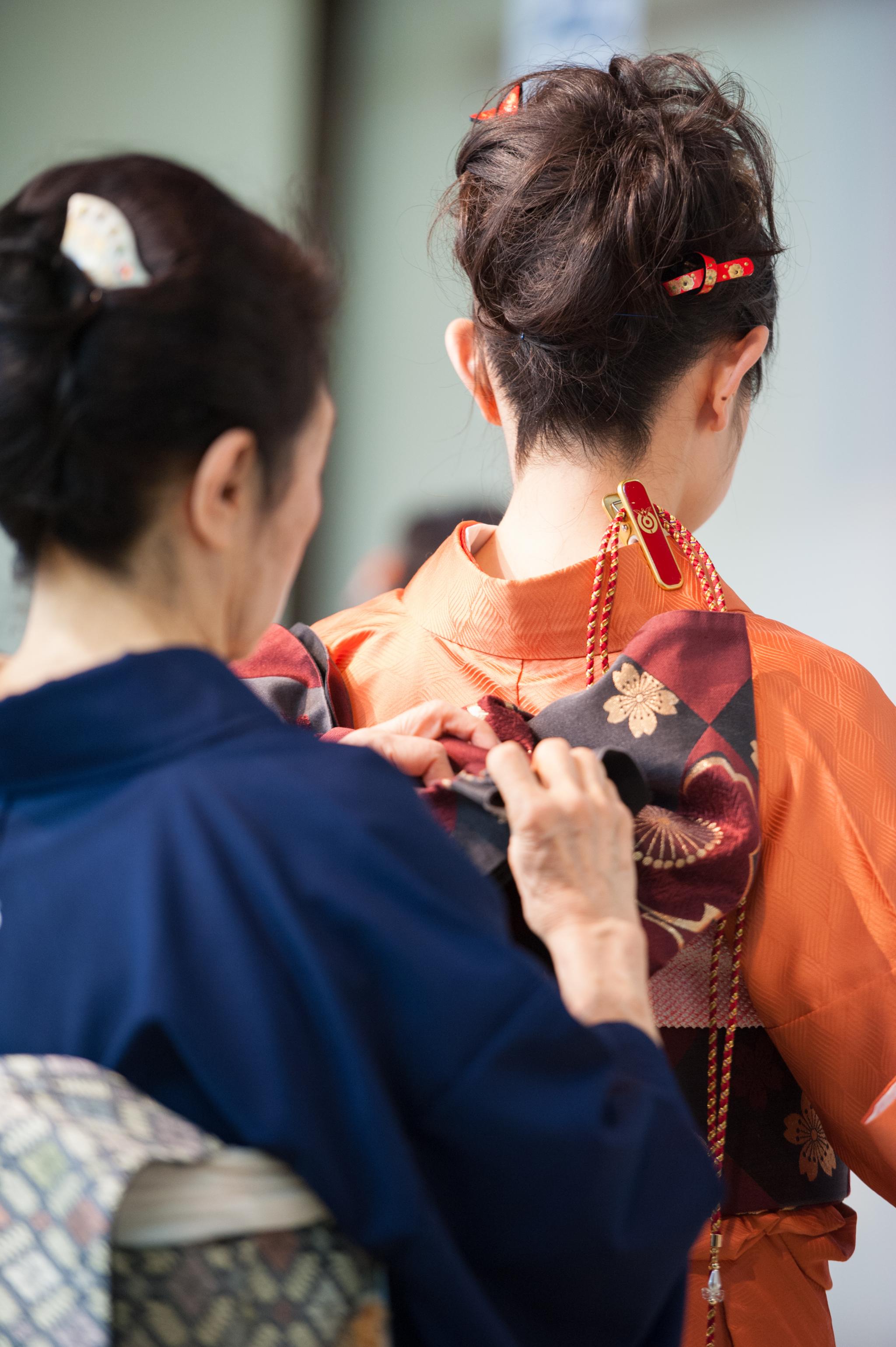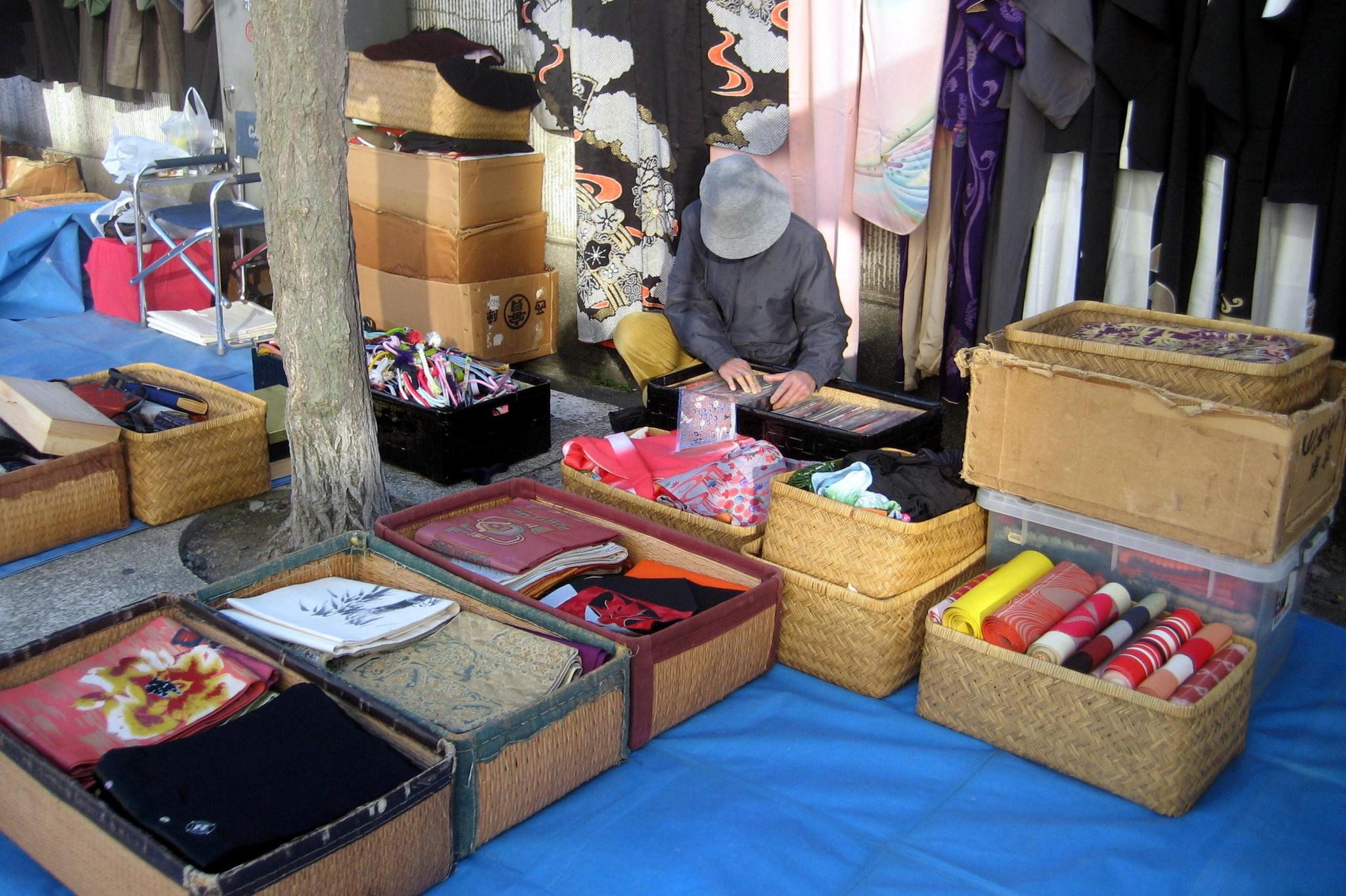Ninnet Ongartthaworn is a Holder of Bachelor of Economics from Nagoya University, Japan, and currently a Master's student in Global Markets, Local Creativities (GLOCAL), an interdisciplinary Erasmus Mundus International Master jointly taught by Erasmus University Rotterdam’s, together with University of Glasgow, and University of Barcelona. As part of her Master she did a traineeship as science communication intern at the Centre for Global Heritage and Development during the second semester of this academic year. We invited Ninnet to write an article.
Text: Ninnet Ongartthaworn
Through its exceptional journey in history, kimono is the pride of Japan that has achieved a high social and cultural status both domestically and internationally. However, despite measures to safeguard the craft of kimono-making and public enthusiasm in wearing kimonos, the industry is said to be ‘dying’. What kind of values underly this fashionable heritage? Is there a future in the kimono industry, and what kind of future is it? Sustaining this craft culture requires a dynamic approach; one that is based on the understanding and co-creation of values by makers as well as users.
Kimono (literal translation: ‘thing to wear’) refers to a traditional Japanese garment which is wrapped in front and tied at the waist by a sash called obi. Although relatively limited in form, kimono is considered a national heritage and a fashion item, with variations in textiles, patterns, weaving and dyeing techniques, sleeve lengths, and obi. These variations can tell a lot of stories about the wearer, from their identities and expressions of individuality to the events they attend.

Bridal Uchikake (Outer Kimono) made with Yuzen dyeing technique and embroidery, 1924. Collection of Kyoto National Museum.
Once worn by all Japanese regardless of occasions, the kimono industry took a major turn with the adoption of Western-style clothing. This transition began as a part of state-led rapid modernisation and Westernisation movements that accelerated after World War 2. Western clothing became a symbol of modernity and democracy. It has successfully switched the position with the traditional Japanese kimono, whose status has become an elaborate formal attire worn in ceremonies and special occasions. Hence, silk kimonos survived as luxury products. Meanwhile, the industrial clusters in regions that manufactured regular-use cotton kimonos were forced to turn to jeans and denim production.
As craft, kimono production has been promoted by both cultural and industrial policies. Examples include the designation of Living National Treasures (LNT) and certification of craftspeople by the Japanese government, the listing of traditional craft goods produced in specific districts, and the establishment of a higher education system in kimono-making crafts. But while systems like the LNT ensure the safeguarding of craftsmanship in the highest tier, such kimonos are so expensive that they are out of reach to the general public. Despite a government survey that many young Japanese are enthusiastic about wearing kimonos, the industry’s retail sales in recent years have contracted to a mere one-sixth of its peak in 1975: from approximately 1.8 trillion (€14 billion) to 300 billion yen (€2.3 billion).

Modern-day kimono wearing session. Image by Koji Ishii
The luxury kimono industry has been losing relevance to the Japanese public in the current socio-economic and cultural context. Change in consumer taste towards Western-style clothing, along with an ageing population, low marriage and birth rates, and lower disposable income can all be accounted for the so-called kimono-banare (‘alienation from kimono’) phenomenon. Furthermore, as kimonos are only worn on special occasions, the general public has lost the knowledge of how to pick and wear a kimono, and the value of kimono-making as a craft. Casual buyers without an understanding of craftmanship tend to prioritise design, price and material over originality, place of origin and production process, resulting in a gap between the price that consumers want to buy and the average price of silk kimonos on the current market. On top of this, business practices such as expensive kimono wearing lessons, pushy selling strategies, lack of pricing transparency, and disdain towards casual enthusiasts further drive potential consumers away from the industry.
Despite joint efforts by the government and the industry to resolve said issues, it is apparent that the future of the kimono industry cannot survive on the luxury sector alone. More recent trends and values present newfound opportunities for the diversification and development of the kimono industry. The first one is the newfound fashion interest in kimonos and the value of ethical fashion. The emergence of kimono rental shops and recycle shops since the 2000s serves as a reasonable, fashionable and eco-friendly option for casual kimono enthusiasts and fashionistas. Many shops have combined kimono rental with other services, such as hair and make-up, photography, and guided city tours. Another is technological advancement, in particular the internet, that significantly improves access to kimono knowledge as well as simplifies the supply chain and buying process. It helps consumers realise the value of crafts through stories of kimono history and production, free wear and care tutorials, and content on how to coordinate appropriate and trendy looks of kimono. It also allows users to become content creators themselves, encouraging more creativity and freedom. In addition, the developments have opened up market opportunities for foreign customers, in line with the Japanese government’s Cool Japan Strategy of exporting its culture.

Second-hand kimono stall at Toji flea market, Kyoto. Image by Donna Cleveland.
The Japanese kimono industry case demonstrates a story of a fashionable national tradition in constant transition. Public knowledge and demand are important in sustaining the kimono industry as national heritage. Changes in the socio-economic structure along with values and technological advancement call for the diversification of the industry to revitalise the values of kimono as craft. They also present opportunities to expand the market and promote narratives in the values of Japanese crafts to larger audiences.

